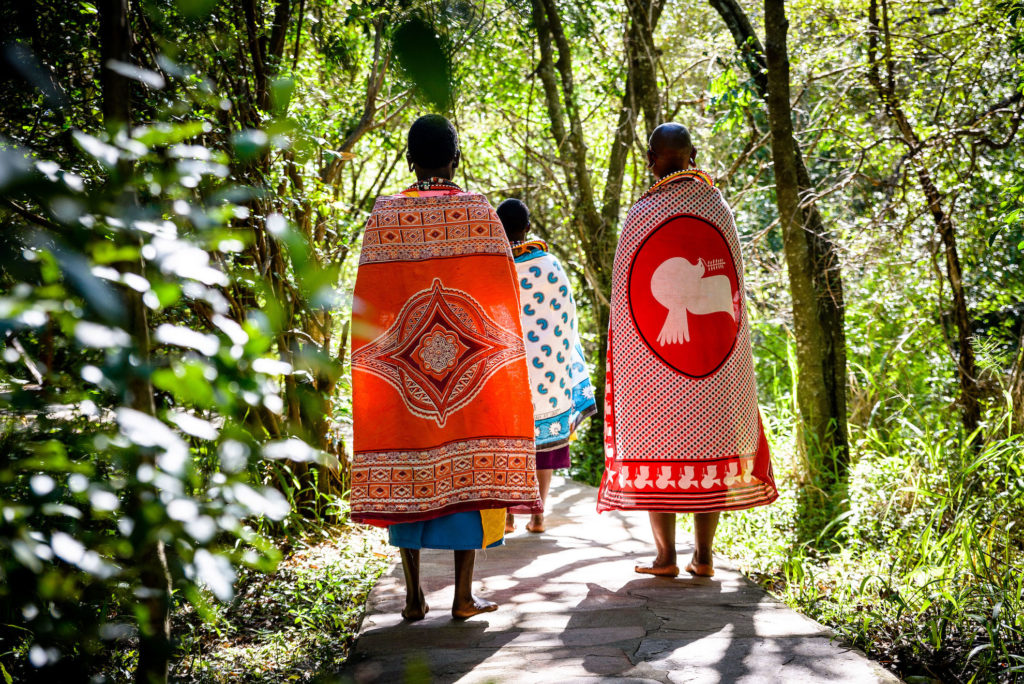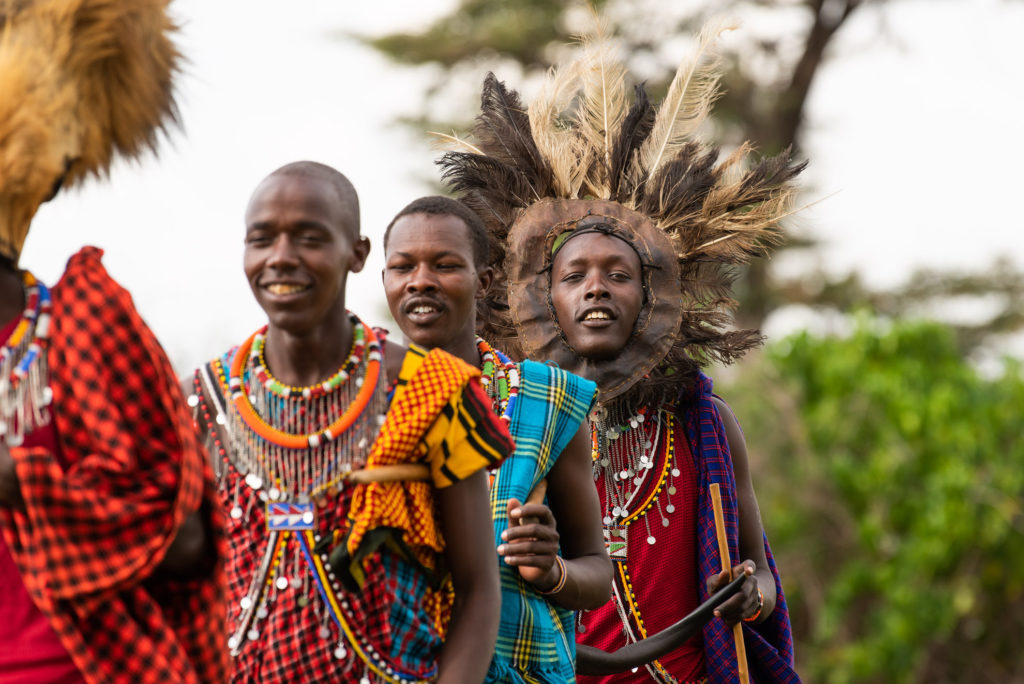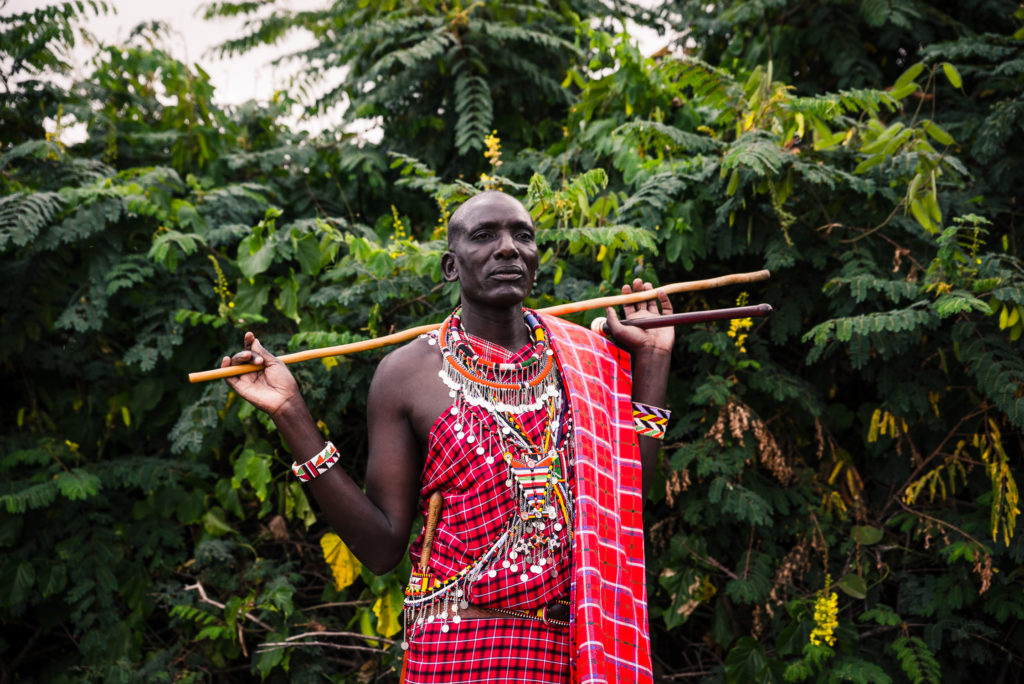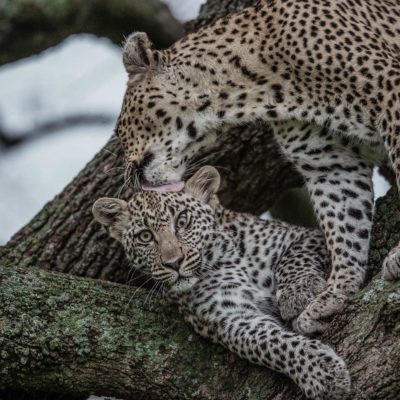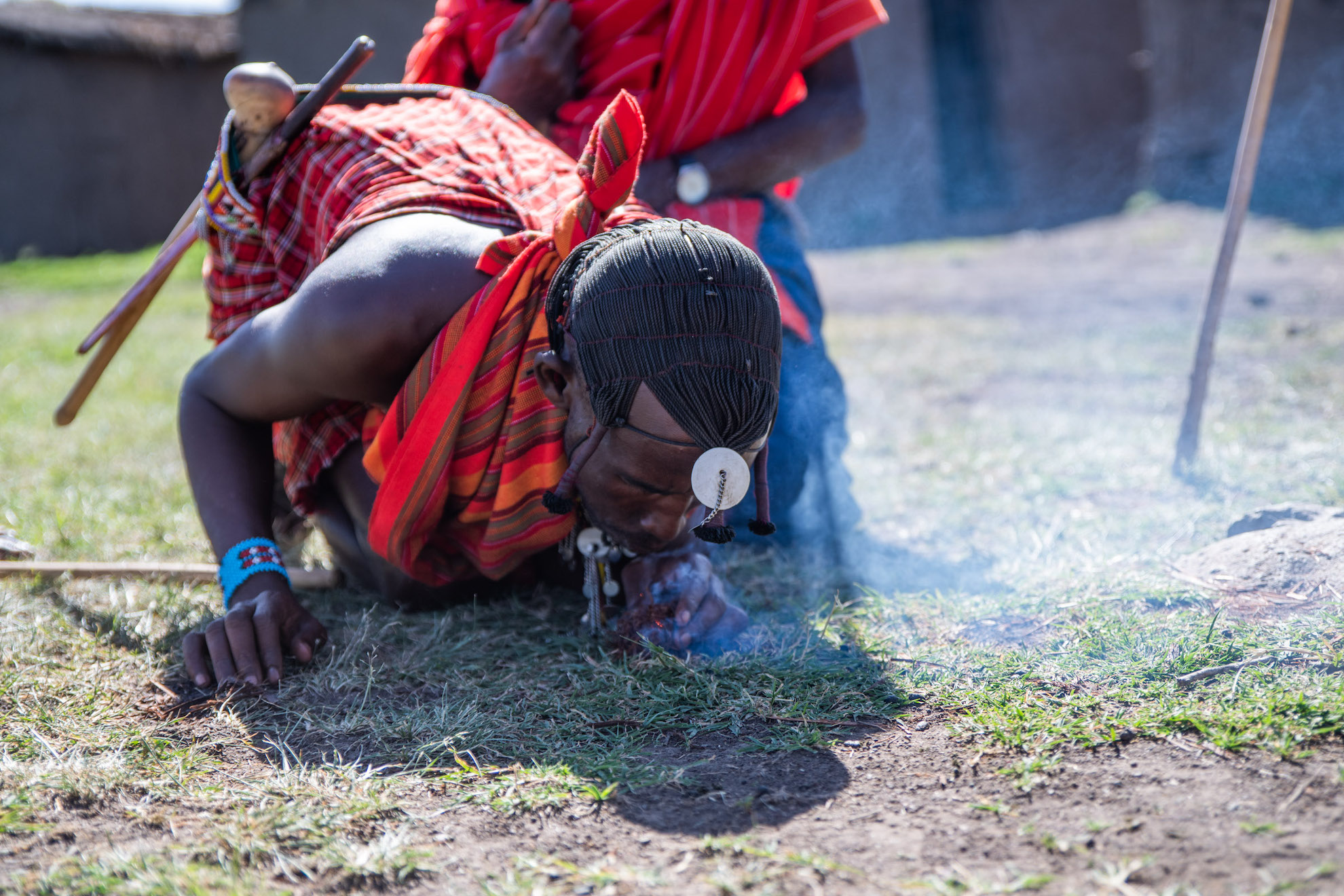
Pure Breaks Introduction to Maasai Culture
In the Maasai region of Kenya and beyond, the Maasai people are an integral pillar to our safari experiences. In most instances it simply wouldn’t be possible without them! The majority of camps employ people from the local Maasai communities as guides, security and general staff, and will offer excursions to the nearest Maasai village where guests can meet members of the community and have a more personal experience of Maasai culture.
It’s generally good practice for a traveller to know a bit about the culture of the destination they’re visiting. Equipping ourselves with a little knowledge deepens our appreciation for where we go on our travels and makes us more considerate towards those of that culture.
Beginning with a little background, the Maasai are a Nilotic people, meaning their ancestors were indigenous to the Nile Valley and that they’re speakers of a Nilotic language. In the case of Maasai people, it’s the Maa language and they are the southernmost speakers of a Nilotic language in Africa. According to oral tradition, the Maasai people began to migrate southwards as early as the 15th century. Indigenous groups were uprooted in the process, in what is now Kenya and Tanzania, but others integrated with the settling Maasai tribes. The Maasai later had two thirds of their land – and significantly their most fertile land – taken from them by British colonists in underhand treaties signed in 1904 and 1911.
There are four central pillars of Maasai culture: their social connectedness, their dress and ornaments, their ties with wildlife and nature, and the practice of Moranism – warriorhood. Members of the community are linked together by a complex social network that’s characterised by equally complex ceremonies, rites of passage and social divisions based on roles and age sets. Compared to western society there is very little privacy and a deeper emphasis on communal living that aligns with a rural and semi-nomadic way of life. While different groups in Maasai society may be separated at time, members within the group will be living and working together to perform their roles/duties.
Maasai people are well known for their bright attire. Their most prolific garment is the Shuka, the bright robe that will usually be red. Symbolism of colour is deeply important to Maasai culture and reflects in their clothes. Red is the most important colour. It represents the colour of cow’s blood, which will be consumed on special occasions. The connection to cattle also denotes red as a sacred colour because in Maasai tradition cattle were a gift from God. Red is also the colour worn by Maasai warriors to protect themselves from predators and thus has become connected with another cornerstone of their culture.
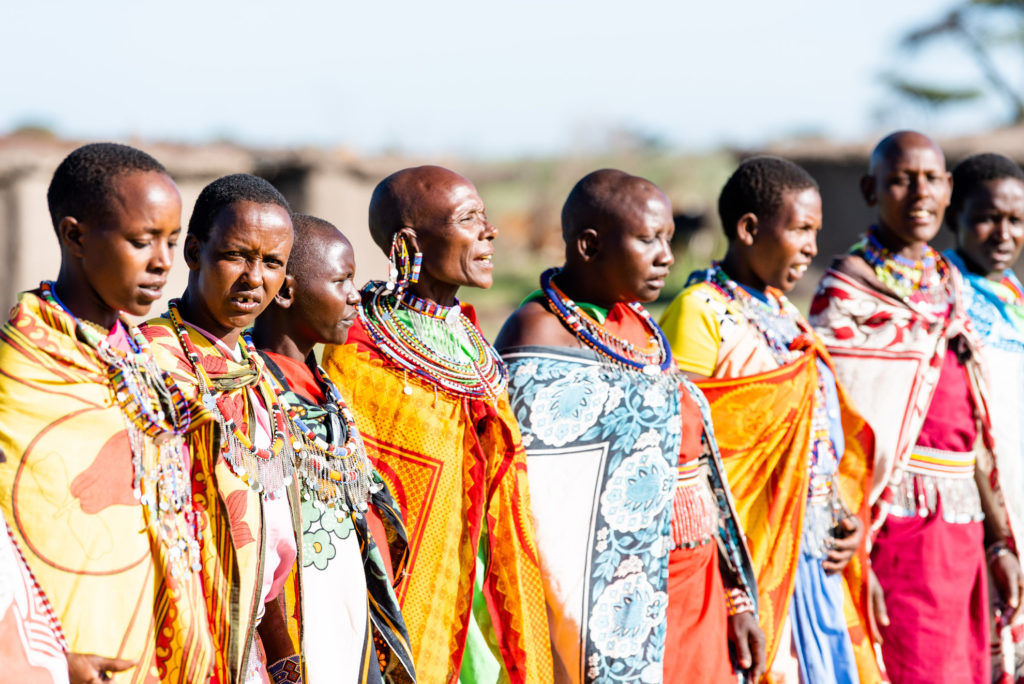
For centuries the Maasai have lived as herders and it remains a key part of their identity. They begin herding as children and with this responsibility comes a deeply cultivated attunement with the natural world. They have to know the land, understand its cycles and developments. They have to understand the wildlife and know how to protect their livestock. Most importantly they must foster a balance between themselves and the wilderness.
Similarly, Maasai tribes would have warriors to protect their livestock and villages from predators or rivals. All warriors are men and warriorhood forms the second of the three stages in the life of a Maasai man, which are boy, warrior, and elder. The duty of the warriors is to protect the tribe from any threats and warriors must prove themselves through feats of strength and bravery. Traditionally, an aspiring warrior would have to ceremonially kill a lion in order to be granted warrior status but this practice is mostly gone now.
This aspect of warriorhood is gradually being replaced with the position of ‘Lion Guardians’ where Maasai warriors use their traditional skills to protect lions instead and with a sort of Maasai ‘Olympics’ that allows warriors to demonstrate their prowess.
The Reality of Maasai Culture
A barbaric reality of Maasai culture is that it remains deeply patriarchal. A Maasai myth tells that there were once two tribes, one of men and one of women. The men’s tribe herded cows, goats and sheep, while the women’s tribe herded gazelles and lived alongside elephants. It’s said that while the women bickered their herds escaped and their elephant friends left them. So, the women went to live with the men and in doing so gave up their autonomy and became subject to male authority. The sentiment of the myth continues as a damaging and oppressive reality in Maasai culture.
Women are marginalised from active roles in leadership and decision-making, and their value is predominantly measured on the number of children they have. Their roles are largely domestic and revolve around the men of their village. For centuries it has been the cultural norm for girls to be married before they have reached adulthood – they are essentially sold by their fathers in exchange for cattle and money. Maasai women are greatly capable and skilled people and they endure great hardships.
They build homes, walk for miles to collect water, raise children, care for livestock, create beautiful bead jewellery, chop and carry heavy loads of firewood. Their communities would fall apart without them and yet they are barely valued. They are expected to give the most nutritious food to their men and, by tradition, pregnant women are purposefully underfed and overworked so they might give birth to smaller babies but naturally this only leads to greater difficulties in their labour.
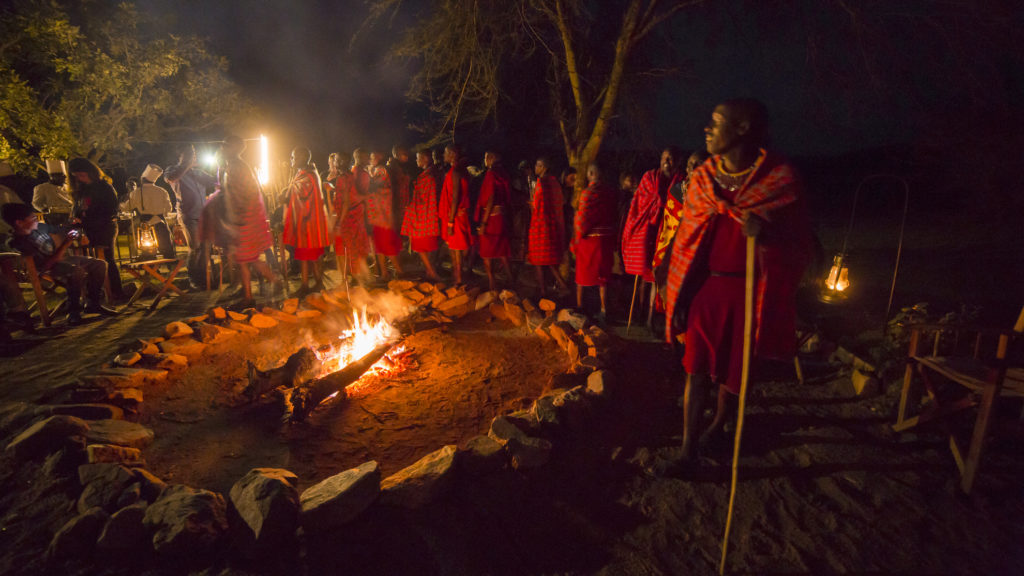
However, internal and external movements to empower women and girls are growing throughout Maasai societies, slowly but surely adjusting the culture – and this is one of the benefits of ecotourism/conservation. Through funding schools, girls are able to receive an education that otherwise wouldn’t have been available to them.
Helping girls receive an education helps to broaden their skillset and connections, opening up a whole new horizon of future opportunities for them so they will not be limited to the traditional lifestyle of previous generations of Maasai women. They can go on to find employment, such as at safari camps or doing conservation work, which helps them to attain financial security and independence for themselves and their families. Empowering one generation of women goes a very long way in protecting and empowering the next.
Like every culture, the ways of the Maasai people are complex and susceptible to change. They might even seem bizarre at first to someone from another culture. Things like warriorhood and nomadism are unfamiliar to us in the western world – all the more reason to equip ourselves with a little knowledge so we might have that deeper understanding and appreciation of Maasai culture if we’re ever lucky enough to encounter it.
“What really marks the Maasai aside is that many aspects of their culture have endured so long. We can attribute this, in part, to the lack of urbanisation, which historically has been a key factor for accelerating development and change. Until I began writing about Kenya I had never even heard of the Maasai people, yet it meant I could go on this amazing journey of discovery.”

